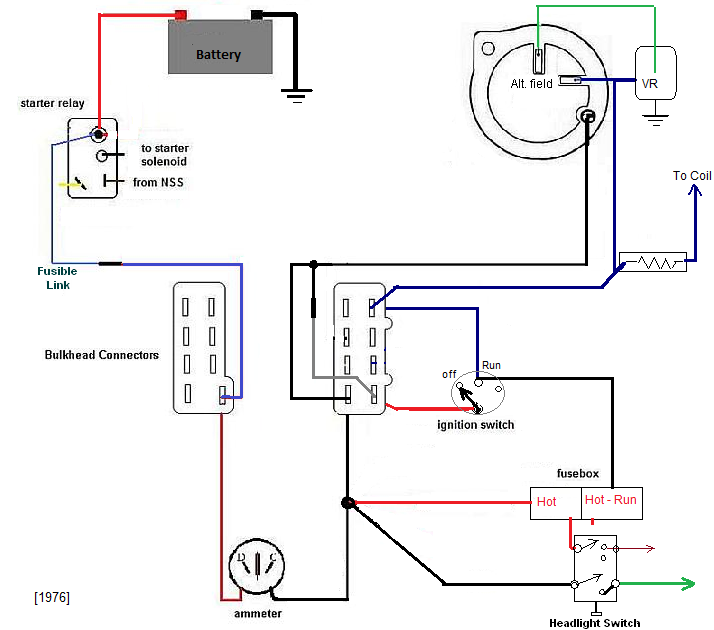You should really find the resistance because its probably not just the ignition circuit. Check the alternator output's connection through the firewall first. The reason is that goes to the main junction - which is a big welded splice that feeds everything. So resistance at the connector effects everything downstream.
'76 is a little different than the earlier years, but the overall concept is similar. When the engine is running, alternator is usually the highest voltage source anything drawing current gets it from there. If its an item that's on keyed 'run' then it goes from the welded splice to the ignition switch. One of the differences you may find is there are two welded splices. It split the load before the bulkhead connector (assuming its running on alternator power, not battery).
PS. To find voltage drop caused by resistance, current must be flowing through the wire in question.
With the engine off, lights off, there's no flow. Voltage in all the hot wires will be the same regardless of condition.
 Work in Progress, 1976 A-body Charging & Ignition Wiring Schematic
Work in Progress, 1976 A-body Charging & Ignition Wiring Schematic
Last edited by Mattax; 10/17/18 02:21 AM.

